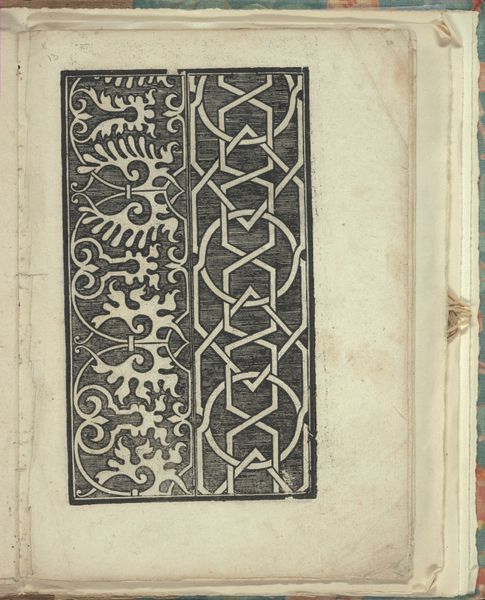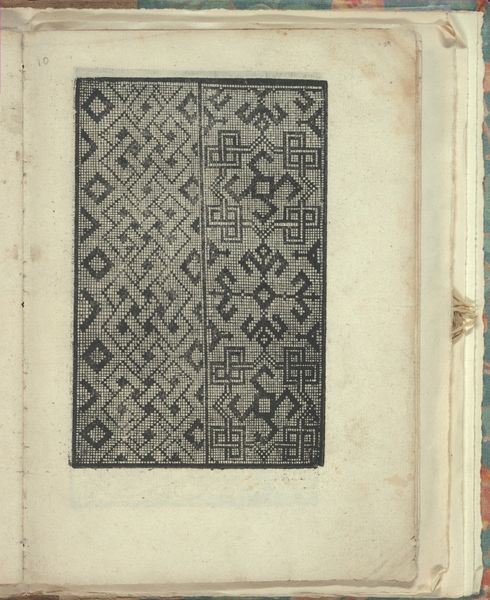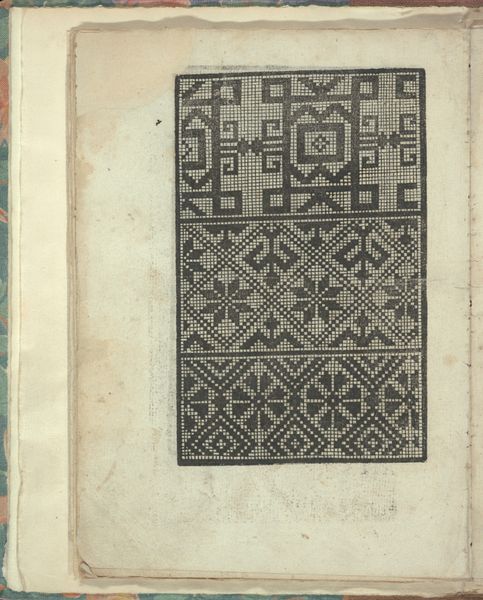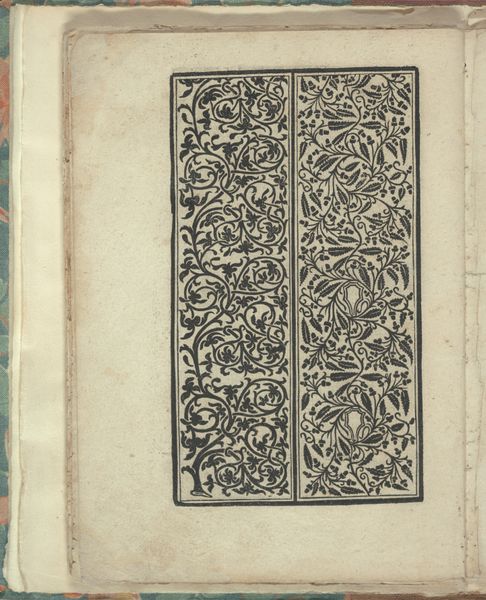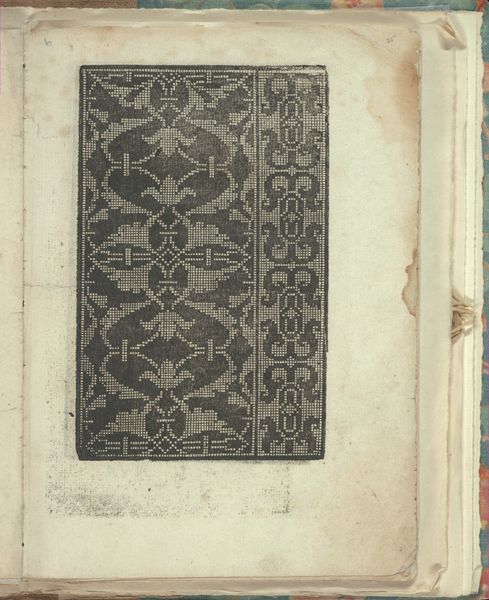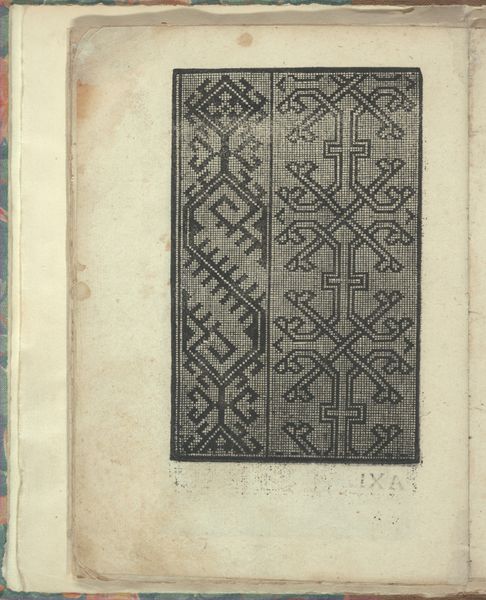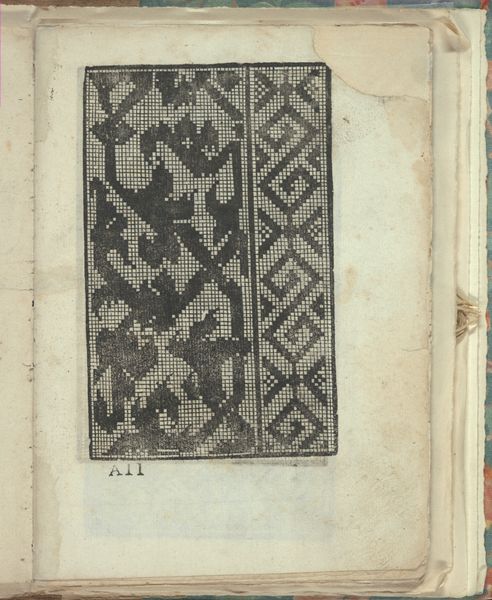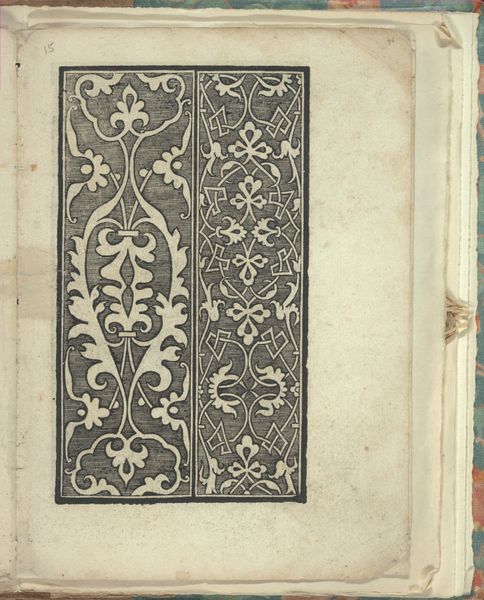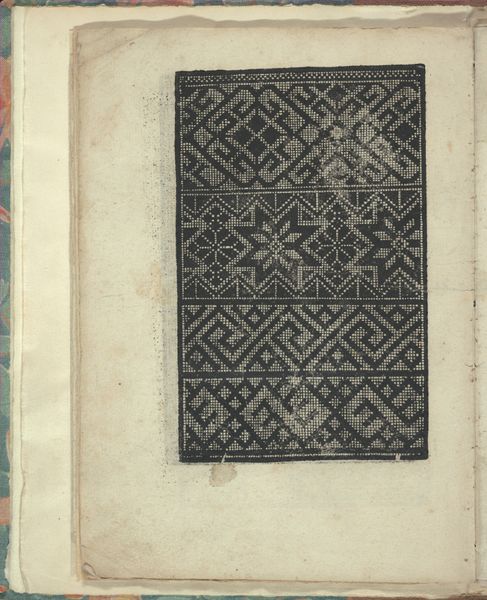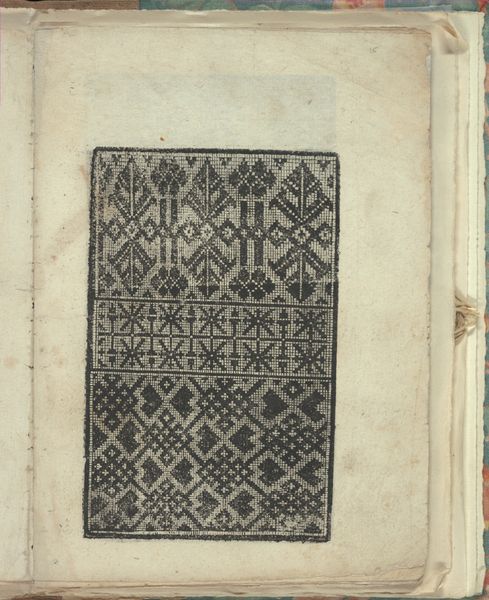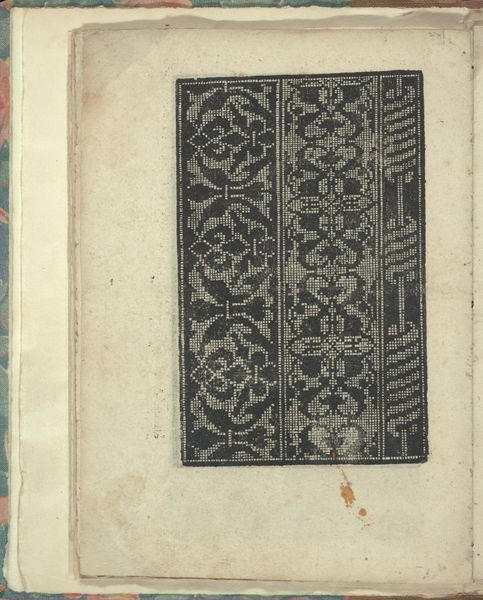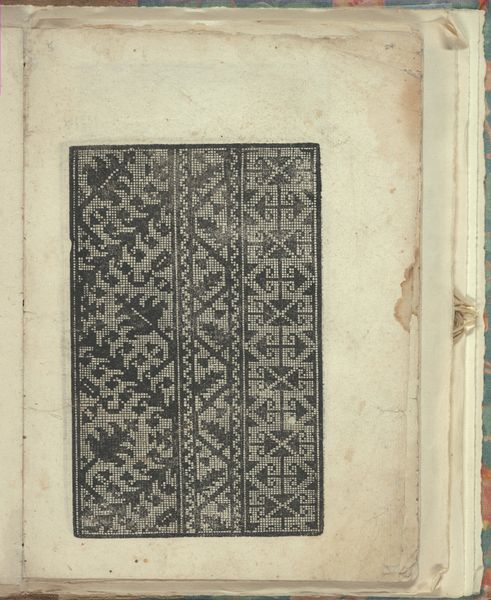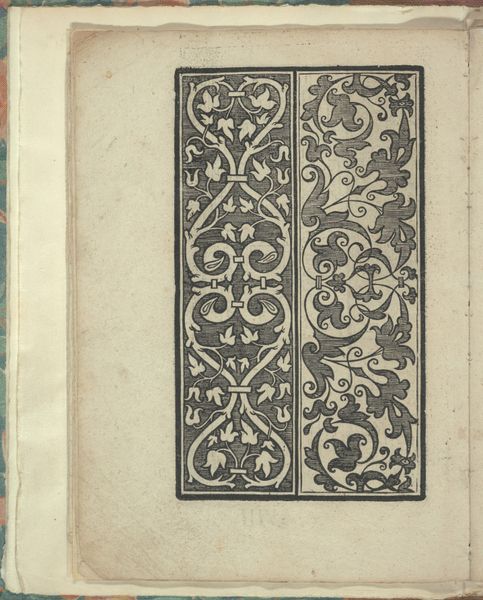
Opera Nova Universali intitulata Corona di racammi, page 28 (verso) 1530
0:00
0:00
drawing, ornament, print, engraving
#
drawing
#
aged paper
#
ornament
#
toned paper
#
homemade paper
#
ink paper printed
# print
#
book
#
paper texture
#
tea stained
#
11_renaissance
#
geometric
#
italian-renaissance
#
engraving
Dimensions: Overall: 8 7/8 x 6 7/8 in. (22.5 x 17.5 cm)
Copyright: Public Domain
Curator: Here we have "Opera Nova Universali intitulata Corona di racammi, page 28 (verso)", created around 1530 by Giovanni Andrea Vavassore. It’s an engraving, ink on paper, offering a glimpse into Renaissance pattern books. What are your initial impressions? Editor: The aged quality of the paper immediately grabs me. The sharp contrast of the dark ink against the faded background creates such a sense of texture, of a history lived within the fibers themselves. Curator: Absolutely. Looking closer, the intricate detail suggests a highly skilled artisan working with meticulous precision. The design is effectively a template, meant to be reproduced, and consumed. How might its function and means of production play into our understanding? Editor: We must remember that this wasn't created in a vacuum. Manuals like these provided patterns for lacemakers and embroiderers. Thinking of the lives and hands that replicated these designs, particularly those of women whose labor often went uncredited, offers a counterpoint to our reading of high art. Who had access to this book, and whose work was rendered invisible by it? Curator: That is critical. We're dealing with both artistry and a nascent industry, of repeatable designs catering to specific markets. You can almost feel the weight of the press, the deliberate, mechanical act of imprinting the design. It’s a piece of commodity, meant to be used and circulated widely. Editor: I see echoes of the Moorish influence here. Considering that Vavassore worked in Venice, a bustling port city and nexus for cultural exchange, these repeating geometries hint at the complex intersections of cultures, power dynamics, and aesthetic sensibilities in the 16th century. The patterns themselves tell a story. Curator: Exactly. Its cultural importance shouldn't be reduced. It showcases design ideas in material form; however, at the end of the day it is printed and engraved – that informs its purpose and meaning as much as any intended symbolism might. Editor: So, it's about interrogating not just what we see, but who gets to see it, and the socioeconomic structures at play. This design, at its very essence, is shaped by human hands, by capital, by material availability. Curator: Looking at it from both vantage points truly brings new ideas. Its physical presence combined with your cultural observations adds dimensions. Editor: And for me, the focus on the material reminds us of the concrete realities that birthed these beautiful designs, as cultural and intellectual products.
Comments
No comments
Be the first to comment and join the conversation on the ultimate creative platform.
